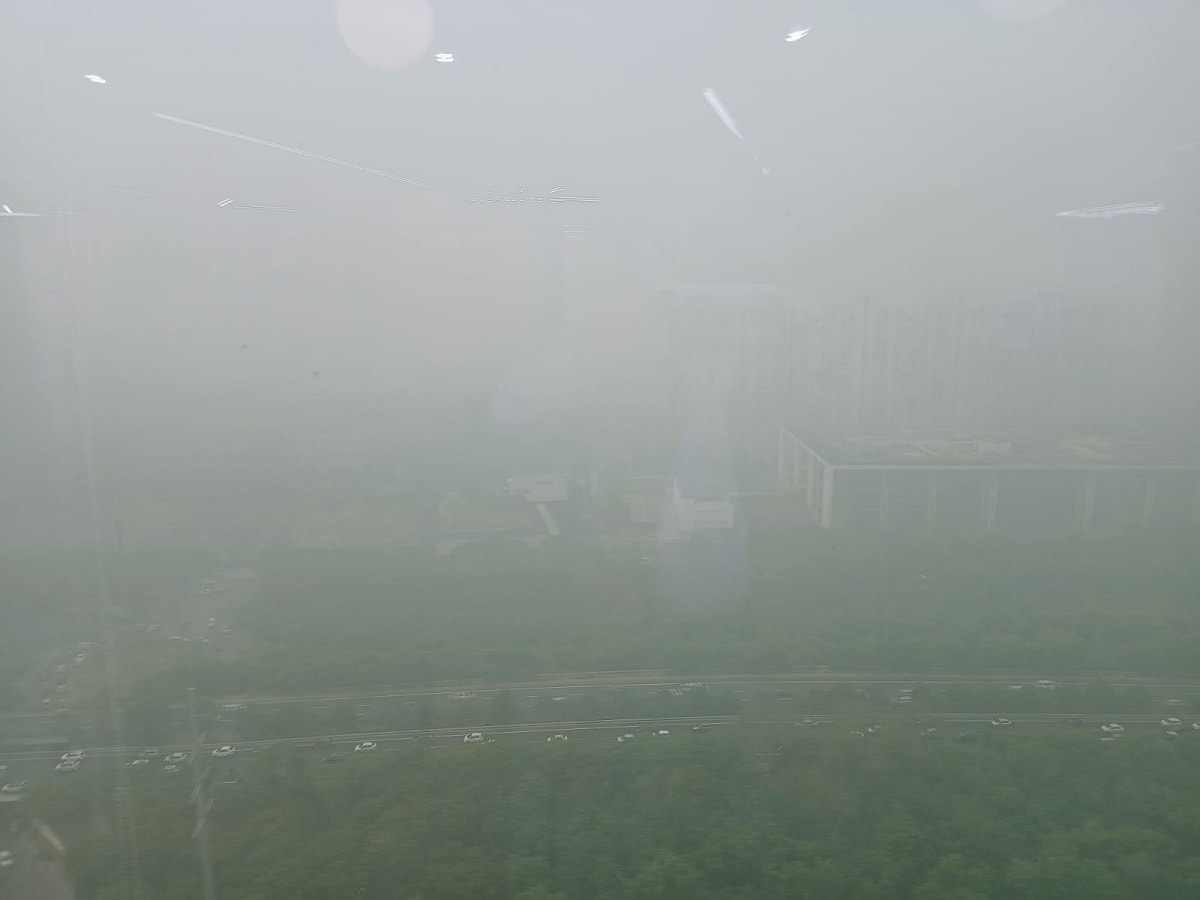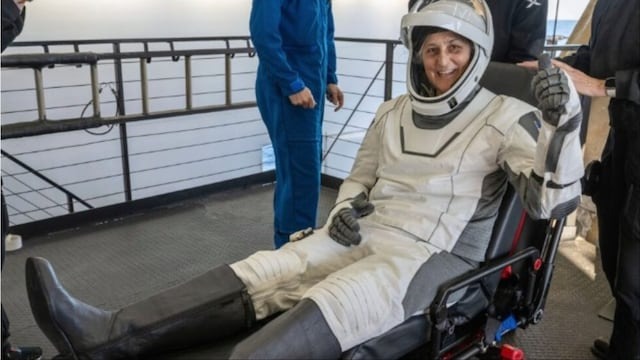
The thick blanket of smog that has been looming over Delhi-NCR for the past ten days is refusing to clear. This trend that started after Diwali is forcing the entire area to remain in 400-500 or even worse AQI every day. In this condition, if someone goes out in the open air, poisonous air will enter his throat and lungs. Even after applying Grape 4, there is no improvement in the situation. Now it seems that this situation of Delhi NCR can be got rid of only by artificial rain. Some colonies of Noida are also considering doing this in their areas.
The most worrying thing here is that the weather forecast is denying any kind of rain in the next 8-10 days because if this happens, the toxic elements dissolved in the air will get washed away with the rain.
Delhi's environment minister Gopal Rai on Tuesday wrote to the central government, seeking Prime Minister Narendra Modi's intervention for artificial rain in an effort to tackle the worsening level of air pollution in the national capital. "North India is covered in smog. Artificial rain is the only solution to get rid of smog. It is a medical emergency," the minister told the media on Tuesday.
Due to the smog staying for such a long time, a large number of people are getting sick. Burning sensation in the eyes. Difficulty in breathing. Complaints of cough. Those who are suffering from respiratory diseases are in the most trouble.

Even after applying Grape 4, there is no improvement in the situation. Now it seems that this situation of Delhi NCR can be got rid of only by artificial rain. (IMAGE GENERATED BY LEONARDO AI)
India has the technology for this.
In such a situation, it seems that artificial rain is the only solution left that can give some relief to Delhi, NCR,, and North India. India has the technology to make artificial rain. Such rain has been made at many places in our country from time to time. When such rain happens, the air will become absolutely clean. This will be very beneficial for people's health.
Last year, the scorching heat of the United Arab Emirates made artificial rain by charging the clouds with the help of drones. However, this is a new technique of making rain. In this, rain is made by giving an electric shock to the clouds. As soon as the electricity was charged, there was friction in the clouds and it rained heavily in Dubai and the surrounding cities.
Such rain has been made 70 years ago.
In the 50s, Indian scientists experimented and made artificial rain in Maharashtra and Lucknow in UP. In Delhi, preparations for artificial rain were made 2-3 years ago to deal with air pollution.
By the way, the artificial rain that happened in Dubai and its surrounding cities was done using a completely new technology. Drones were used in this. Scientists at the University of Reading have been working on this for some time now. However, making this rain is quite expensive. Artificial rain has been happening in other ways as well. In that, usually,, artificial clouds are first created and then they are made to rain. This has been happening in many countries.

In this way, cloud seeding is done through airplanes, and the rain gets charged and starts raining. (news18)
How does artificial rain happen?
Artificial rain is a scientific process. For this, artificial clouds are first created. In the oldest and most popular technique, silver iodide is added to the clouds by reaching up through an airplane or rocket. Silver iodide is just like natural snow. Due to this, the water in the clouds becomes heavy and it rains.
Some experts say that clouds are necessary for artificial rain. Cloud seeding cannot be done without clouds. When clouds are formed, silver iodide is sprayed. Due to this, the steam turns into water droplets. They become heavy and fall to the earth due to gravity. According to a report by the World Meteorological Organization, 56 countries around the world are experimenting with cloud seeding.
This is called cloud seeding.
This process of artificial rain has been in use for the last 50-60 years. This is called cloud seeding. The first demonstration of cloud seeding took place in February 1947 in Bathurst, Australia. This was done by General Electric Lab.
Artificial rain was made several times in America in the 60s and 70s. But later it started decreasing. Artificial rain was originally used to avoid the problem of drought.

Artificial rain has already been made in many parts of the country. (news18)
This method is also used to avoid the threat of rain.
China has been using artificial rain. During the Beijing Olympics in 2008, China used this method through 21 missiles. So that the threat of rain could be avoided. However, recently there has been no such news from China that shows that it still uses this method to deal with pollution. Experts say that China has now stopped cloud seeding to control pollution.
Preparations were made to make artificial rain in Delhi in the year 2018.
In the year 2018, preparations were made to make artificial rain when pollution increased in Delhi. Scientists of IIT Kanpur had prepared artificial rain to deal with the serious situation of air pollution. They were just waiting for the weather to become favorable. IIT professors had also acquired a plane from ISRO to make artificial rain. But due to unfavorable weather, artificial rain could not be made.
Experiments have been done in Lucknow and Maharashtra.
The technology of artificial rain has already been tested in some parts of Maharashtra and Lucknow. But it has not been used in any large area to deal with pollution. However, artificial rain has been successfully used in India for many decades. The Rain and Cloud Physics Research affiliated with IIT has contributed a lot in this regard.

The blanket of smog is getting denser in Delhi-NCR. As the day progresses, the smog haze also increases. (news18)
The first experiment of cloud seeding in India was done in 1951. S.K. Chatterjee, the first Director General of the Indian Meteorological Department, was a well-known cloud scientist. Its experiments in India began under his leadership. He then caused artificial rain by sending salt and silver iodide in balloons filled with hydrogen gas over the clouds. Cloud seeding has been used in India to deal with drought and increase the water level of dams.
Such rains have been continuously induced in the country.
In 1951, the Tata firm induced such rains at many places in the Western Ghats. Then the Rain and Cloud Institute of Pune induced such artificial rains in many areas of Uttar Pradesh and Maharashtra. Such rains were induced in India in the years 1983, and 84, and in 93-94, such work was done in Tamil Nadu to deal with the drought. In 2003-04, artificial rain was induced in Karnataka. In the year 2008, there was a plan to induce such rains in 12 districts of Andhra Pradesh. What I mean to say is that India has been far ahead in the field of artificial rain.
About two years ago, IIT professors had said that it is easy to make artificial rain before and during the monsoon. But it is not easy during the winter season. Because during this time the amount of moisture in the clouds is not much.

 Desk
Desk Share
Share
_939839210.jpg)





